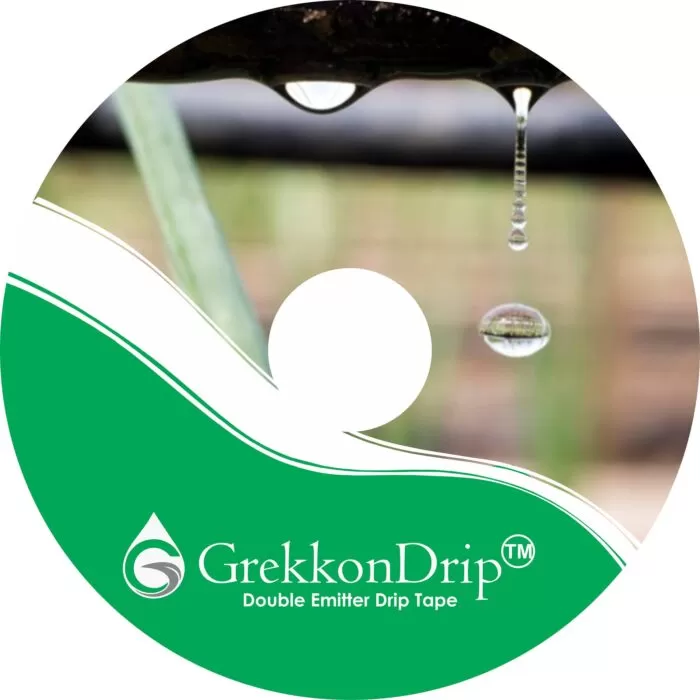
Drip Irrigation System
Every drip irrigation system in Kenya by Grekkon Limited supported by a HDPE or PVC line. We are the largest drip irrigation kits suppliers in Kenya, reaching the highest number of farmers. At the very bottom we do simple drip irrigation systems, also known as kitchen garden drips
It advances to 1 acre drip irrigation kits, 5 acre drip irrigation systems to hundreds of acres. Our drip pipes for sale in Kenya are the double emitter drip irrigation pipes
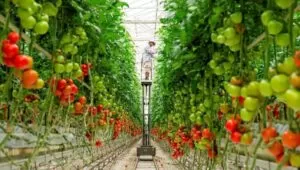
Drip Irrigation Kits Prices In Kenya Are A Factor Of
- Crop type
- Bed spacing
- Terrain
Drip Irrigation System Cost Per Acre In Kenya
| Crop Type | Lines Per Bed | Acreage | Cost in Kes |
| Watermelon, sweet melon, butter nut | 1 | 0.125 | 15,000 |
| 0.25 | 25,000 | ||
| 0.50 | 45,000 | ||
| 1 | 85,000 | ||
| Tomato, cabbage, chillies, capsicum | 2 | 0 | 25,000 |
| 0.25 | 40,000 | ||
| 0.50 | 75,000 | ||
| 1 | 140,000 | ||
| Onion, garlic, herbs, spices, strawberry, green beans | 0 | 27,500 | |
| 3 | 0.25 | 45,000 | |
| 0.50 | 85,000 | ||
| 1 | 160,000 |
Drip Kit Components
- The main line. This is a PVC or a HDPE pipe. The choice of pipe thickness is according to the pressure of the water in it. A farmer with gravity flow has a thinner pipe than one with a high pressure water pump
- Water filter. To remove impurities that will otherwise block the drip pipe emitters
- Gate vales. They control the water movement from one point to another by opening or closing
- Main line fittings; tees, elbows, adaptors, connectors, saddle clamps, reducers, and end caps. They are either PVC or HDPE as per the pipe. Their size depends on the pipe size
- The sub main line. This is connected to the main line, and is the origin of drip lines
- Sub-main line fittings; tees, elbows, adaptors, connectors, saddle clamps, reducers, and end caps. They are either PVC or HDPE as per the pipe. Their size depends on the pipe size
- Drip pipes. These pre-perforated pipes have emitters that supply water to the crop directly
- Drip fittings; starter connectors, off take connectors, drip to drip connectors, rubbers, mini-valves, and end caps
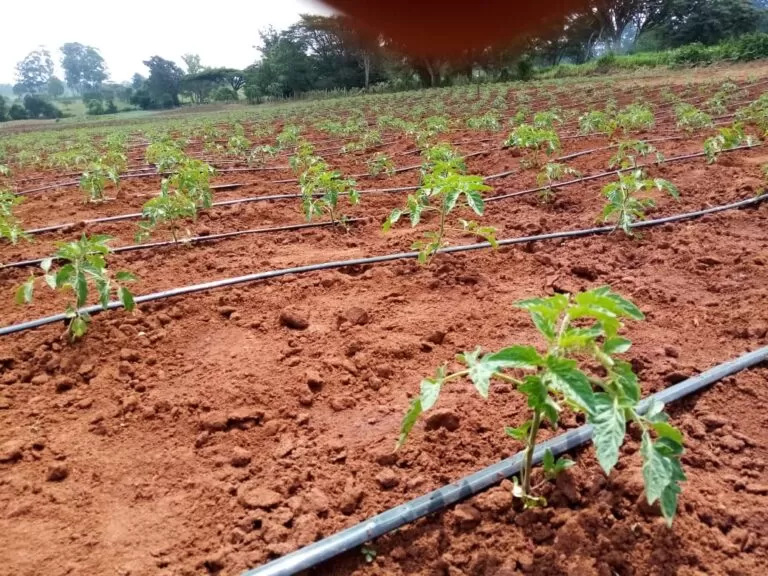
Tomato Drip Kit Price
Tomato drip kit price in Kenya by Grekkon Limited is by acreage. Our drip irrigation prices range as; kitchen gardens, 1/8th acre, 1/4 acre, 1/2 acre, 3/4acre and 1 acre. The components of these tomato drip are; HDPE pipe. The diameter ranges from 1″ to 1-1/2″ according to the size of the area HDPE fittings. […]
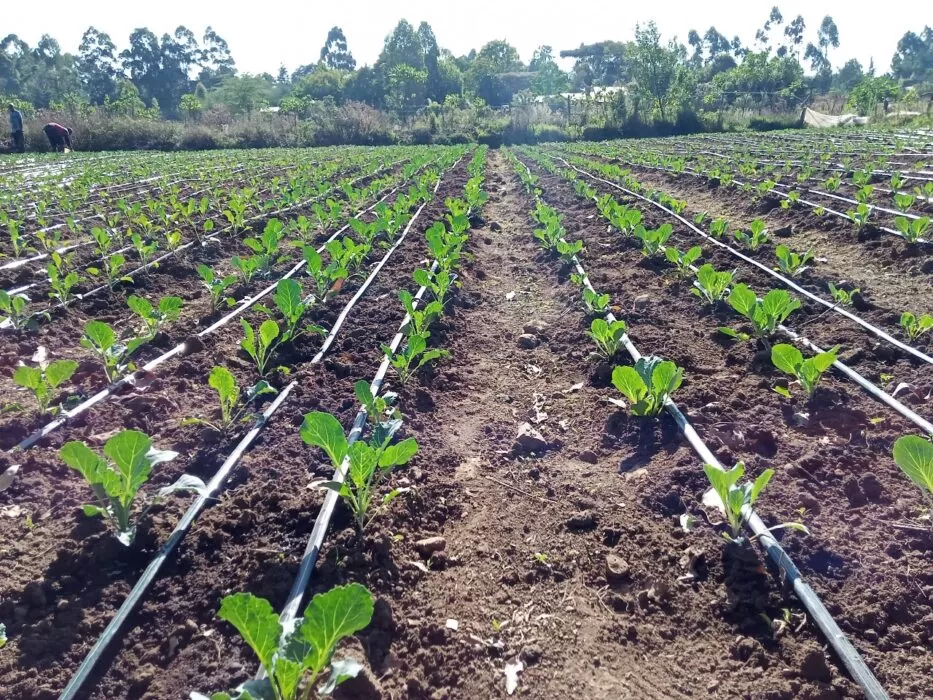
Drip Irrigation System Layout
Grekkon Limited’s drip irrigation system layout is done for all farm sizes, and all crops. There 3 ways in which the company gathers data to develop a drip irrigation system layout
- Farmers provide detailed sketches as directed by the company from which a drip irrigation system layout is developed. This sketch will include; the farm dimensions in meters, the water source type, distance to the water source from the farm, details of any existing irrigation infrastructure, any existing roads or pathsways, any none farmable sections (rocky areas, wet lands, built up locations etc), planting beds layout, the direction(s) of slope, and the total vertical elevation
- Provide the farm’s map coordinates from which the company assesses the farm layout using satellite technology
- Conduct a physcal site assessment visit. This is only carried when 2 above cannot be done
The company only charges for the 3rd service to cover the logistical costs


A sample drip irrigation system layout for a 40 acre farm by Grekkon Limited
The company’s irrigation engineers will conduct a physical visit on a prospective farm to determine the following
i. The water source. The company measures the water volume, and analysis the quality. The volume determines the irrigation system to use, the size of the water pump, and the acreage covered. For intance, a farmer with a borehole yielding 15 cubic litres per hour is best positioned to irrigate using drip irrigation. His irrigated acreage will not exceed 30 acres for optimal water utilisation. On the other hand, a farmer by a large permanent river or lake water source will irrigate hundreds of acres using any irrigation method preferred. The water quality determines the type of filtration system to install.
A screen filter is for water under low pressure with a negligible amout of suspended dirt or other particles. A disc filter is preferred for water under high pressure, with a negligible to a modest amount of suspended dirt orcother particles. A sand filter is for dirty water under high pressure

A simple drip irrigation kit by gravitational flow system layout
ii. The dimensions of the farm in meters. to provide the total acreage. The acreage will determine the pipe diameter sizes, the water pump’s flow rate, and the sub-division of the irrigation blocks
iii. Slope. The elevation of the farm gives the vertical head or lift needed. This is important in determining the pressure rating of the water pump to install, the pipe diameters, the planting beds layout (these should be done against the slope), and the size of the irrigation blocks
iv. Any existing irrigation infrastructure; to determine what can be used or incorporated into the new system
v. Provide advise on security measures for key company installations such as; large water pumps, solar modules, solar inverters, control panels, cables, and other high value accessories
Key Requirements To Install A Drip Irrigation System
1. A water source
2. A water pump and piping mechanism to move this water from the source to the tank or directly to the drip irrigation system.
3. Water storage tank if you’re using gravity to irrigate
4. A tank connector
5. Pipes for the mainline and sub-main line.
6. Mainline and sub mainline fittings
7. Drip irrigation water filter
8. Drip irrigation pipes
9. Accessories
10. Ball valves
Steps To Follow In Designing A Drip Irrigation Layout
- Determine where the water pump or water tank will be placed. Water tanks are used for small acreage gravity flow irrigation, and should be placed at highest elevation to allow ease of water flow by gravity
- The main line originates from the water tank or water pump. The size of the main line determines the volume of irrigation water delivered to the farm in every irrigation session. The larger the farm, the greater the diameter of the mainline
- The water filter is connected along the main line
- A venturi fertigation system where needed is along the main line. The venturi fertigation system is a chemifertigation centre that allows drenching of chemicals and fertiliser through the drip irrigation system
- The air release valves are along the main line. Air release valves are installed where the water pressure is high. This is in steep elevations, or if the water is chanelled via a high pressure water pump. They prevent air locks in the irrigation system. Air locks dramatically reduce, or cease water flow in the system
- A sub main line will be connected to the main line along its way using hydrants. Hydrants are points from which irrigation in a block is controlled from. They can be automated using solenoid valves, or manually operated through ordinary valves. The decision to have sub main lines is a factor of the farm size. In small drip irrigation set ups, the drip pips are directly connected to the main line. In larger acreage, the drip line originate from the sub mainline
- The main line is always larger in diameter than the sub main line. The diameter of the sub main line is determined by the size of the main line. The larger the latter, the larger the sub main line is
- The hydrants are positioned at the beginning or end of every irrigation block
- Planting beds are done against the slope. This is to slow down erosion, and allow better water percolation in the soil during the rainy season. The width of the planting bed is determined by the crop type
- Drip lines lie along the length of the planting beds. The number of drip lines per bed depends on the crop type. E.g 2 drip lines are installed for tomato, 3 drip lines for onion or garlic, and 4 drip lines for some herbs and spices

A 3 row drip layout per bed installed in Birikani area of Kajiado county
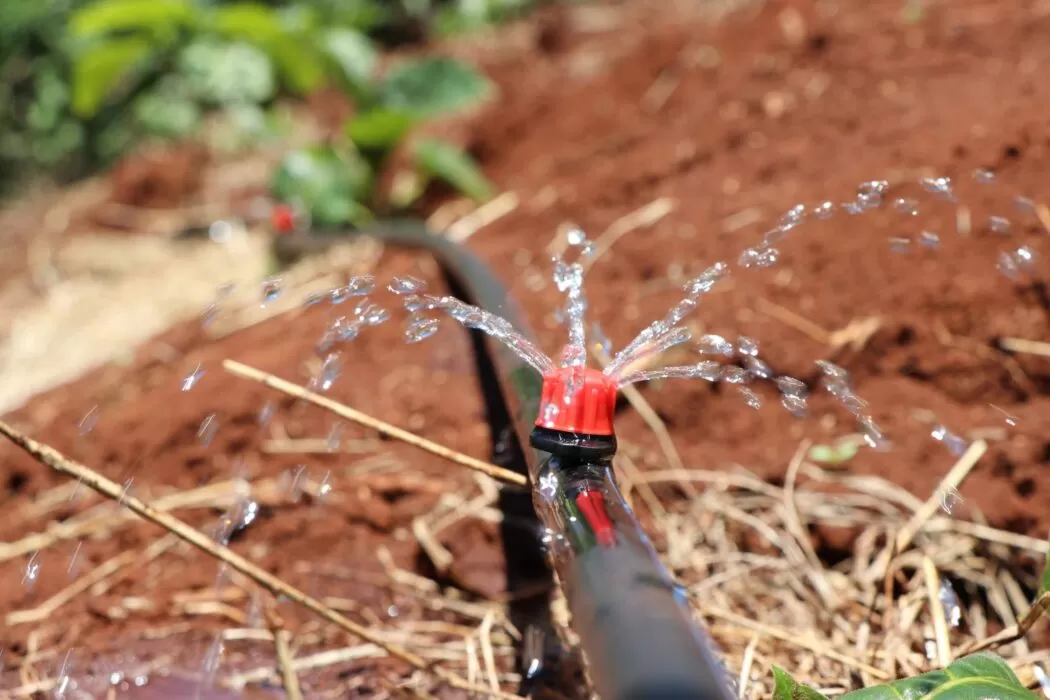
Adjustable Button Drippers For Irrigation
1. What is a button drip emitter?
Adjustable button drippers for irrigation are irrigation accessories attached onto a high density polyethylene (HDPE) pipe.
They deliver a consistent and uniform amount of water the crop by regulating the flow. Button drippers in Kenya, button drip are common in fruit trees, forestry and hedges irrigation
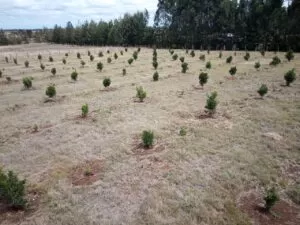
A macadamia crop under button drip irrigation installed by Grekkon Limited in Iten area, Elgeyo Marakwet county. January 2021
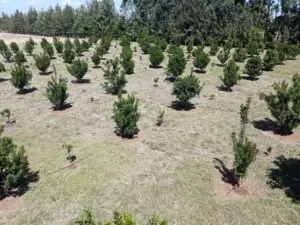
Same macadamia crop in January, 2023
2. How do you install button drippers?
A perforation is made on the HDPE pipe with a drip punch, then the button dripper’s pointed end is pushed into this hole. This punching is done at the point where the tree crop is. But it will be away from the trunk to ensure that water flows to the roots below. The button dripper will be 3-6 inches away from the trunk. This will also prevent fungal infections and other types of diseases.
For younger tree crops, a single button dripper or emitter is sufficient. However, with older larger trees, 2 or more button drippers are provided according to the plant’s water need. In this case, have them equally on the opposite sides of the tree crop to promote even root growth. Two or multiple button drippers ensure that if one is blocked, the other one or the rest continue to water
3. How do you use an adjustable button dripper?
Once in place on the irrigation line, you will adjust your button dripper from 0 discharge to 70 liters per hour flow of water. This is done by turning the dripper to achieve different flow rates as per the crop water needs
4. How long should button drippers run?
Your adjustable button drippers for irrigation will run for 30 minutes to an hour. This is guided by the moisture requirement of the soil, as per the prevailing weather conditions
5. How many button drippers can I run on one line?
This is determined by the diameter size of the irrigation pipe. The larger it is, the more water it ferries over a longer distance. Therefore, the greater the number of button drippers. The other factor is the flow rate of the adjustable button drippers themselves. If adjusted to maximum flow rate (70L per hour), then the line will have less. If the adjustment is to half of that flow rate, then a similar line will carry twice as much
6. How do I increase the pressure in my button drip irrigation system?
They are several ways to raise the irrigation water pressure in your button drip irrigation system
i. Divide the farm into blocks, each of which is irrigated separately. This way, irrigation water is channeled to particular block under high pressure
ii. If it is by gravity flow, then by raising the storage elevation. This will work where raised water tanks are the source of irrigation water
iii. By introducing an external source of pressure, such a s water pump to boost the flow of irrigation water in the system
Adjustable button drippers for irrigation price in Kenya
The cost of a button dripper is Kes 12 a unit
The cost of a button dripper irrigation system per acre depends on the tree crop spacing. In the tabulation below, we provide 3 examples
| Avocado | Passion / Paw Paw | Apple / Tree Tomato | ||
| Spacing | 5M x 5M | 3M x 3M | 2.5M x 2.5M | |
| Cost per Acre | Kes 85,000 | Kes 100,000 | Kes 115,00 | |
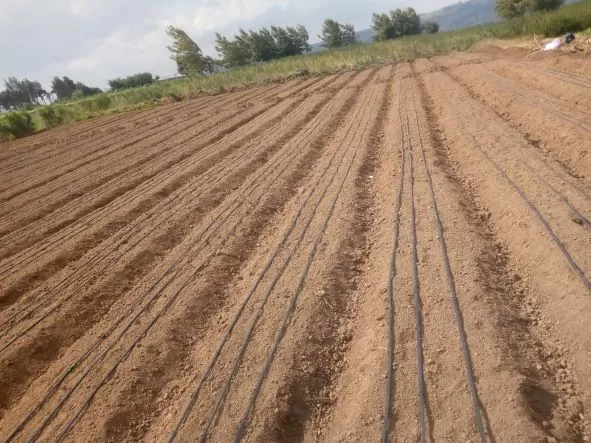
Cost Of Drip Irrigation Per Acre
The cost of drip irrigation per acre in Kenya varies from crop to crop. Grekkon Limited is the top most of all drip irrigation kits suppliers in Kenya. Our drip irrigation system price in Kenya depends on the crop type
For tree crops and hedges, button drippers are installed. In vegetable crops, pre-perforated drip pipes are laid. The emitter spacing on the pre-perforated drip lines is either; 15cm, 20cm, or 30cm. A grower selects according to the vegetable crop type spacing.
We provide our growers a choice of single or double emitter drip irrigation tapes. Double emitter drip lines are helpful in high saline irrigation water locations where salt precipitates form and clog drip emitters. When one emitter is clogged, then the other one continues to irrigate at the same rate. Drip irrigation pipes for sale in Kenya by Grekkon Limited are PVC, and HDPE types
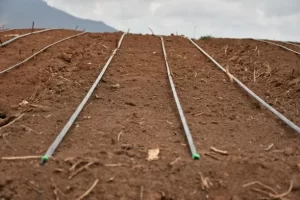
A 3-row drip per bed installation for a vegetable by Grekkon Limited in Ol-Donyo Sabuk area, Machakos county
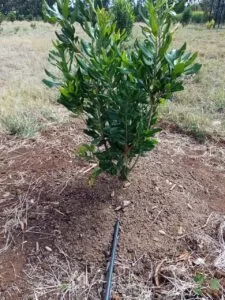
A button dripper irrigation system on macadamia in Item area, Elgeyo Marakwet county by Grekkon Limited
Cost of Drip Irrigation Per Acre
Determining Factors
- Crop type.It determines the crop spacing. Is it a fruit or vegetable garden? Fruit trees and fruit vines or runners such as melons
take less drip tape per acre. So they have the least cost. Vegetable crops take more drip lines, and are thus more expensive
- Pipe type. It is a PVC or HDPE mainline, and sub-mainline? The former is more expensive to work with
- Water pressure available. The higher the pressure, the less the number of irrigation blocks. Less irrigation blocks per acre means less fittings and accessories, so it’s less expensive. With low pressure, more irrigation blocks are created, at a higher unit cost
I. An Eighth To One Acre Drip Irrigation Kit Prices
| Crop Type | Drip Lines Per Bed | Acreage | Cost in Kes |
| Watermelon | 1 | 1/8 | 15,000 |
| 1/4 | 25,000 | ||
| 1/2 | 45,000 | ||
| 1 | 85,000 | ||
| Tomato, cabbage, chilies, capsicum, green beans, peas | 2 | 1/8 | 25,000 |
| 1/4 | 40,000 | ||
| 1/2 | 75,000 | ||
| 1 | 140,000 | ||
| Onion, garlic, herbs, spices, strawberry | 1/8 | 27,500 | |
| 3 | 1/4 | 45,000 | |
| 1/2 | 85,000 | ||
| 1 | 160,000 |
II. Fruit Tree Button Drip Kit Irrigation Prices
| Crop Type | Acreage | Cost in Kes |
| Tree Tomato/ Pawpaw/ Passion/ Coffee | 1/8 | 15,000 |
| 1/4 | 25,000 | |
| 1/2 | 45,000 | |
| 1 | 85,000 | |
| Avocado | 1/8 | 15,000 |
| 1/4 | 25,000 | |
| 1/2 | 40,000 | |
| 1 | 70,000 |
FAQS
a. How much does it cost to install a drip irrigation system in Kenya?
The tabulated cost of drip irrigation per acre in Kenya includes the cost of installation by our technicians. We conduct our installations in all of east Africa, for every grower. After installation, our agronomy team provides 4 months of free agronomy training for new farmers.
b. How much does drip irrigation cost per hectare?
The cost of drip irrigation per hectare is 2.5 times the cost provided per acre
c. How many drip lines per acre?
This is determined by the crop type. 3,000M for 1 drip row per bed, 6,000M for 2 drip rows per bed, and 8,000M for 3 drip rows per bed
4. What is the maximum length of a drip irrigation line?
Your 16mm drip irrigation line will run for 25 to 27M under gravity flow, where the head is below 10M. From 10M head, this will go up to 50M
5. How far apart are drip irrigation holes?
Our emitter spacing is; 15cm, 20cm, and 30cm
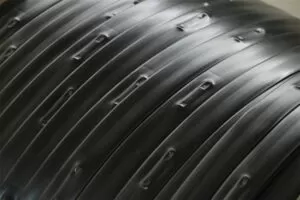
15cm drip emitter spacing on a 1,00M single emitter drip roll
6. How do I calculate drip irrigation?
- Determine the emitter spacing, for example 15cm
- Divide the drip length by this spacing to determine the number of emitters per roll. In our case, 1,000M divided by 0.15M= 6,667 emitters
- Multiply the emitters by the number of rolls per acre, for example 6 rolls, so 40,000 emitters per acre
- Multiply the emitter flow rate by the total number of emitters to get the amount of water discharged per hour. For example 1.5 litres per hour x 40,000= 60,000 litres per hour
7. Which pipe is best for drip irrigation?
HDPE pipes are the best as main and sub main lines because they have UV treatment. This means that they will be used either as surface or sub-surface pipes
8. Can you run a drip line uphill?
Yes. But the head of the flow must be higher than the vertical height of the slope
9. What pipe size should I use for drip irrigation?
The size of the main or sub main pipe installed is determined by the area under irrigation. The larger it is, the larger the pipes used
10. How do I know how long to run drip irrigation?
This is determined by the existing level of soil moisture. Run it for 20 minutes to 1 hour according to the amount of water needed
11. How do I increase the pressure in my drip irrigation system?
They are several ways to raise the irrigation water pressure in your drip irrigation system
i. Divide the farm into blocks, each of which is irrigated separately. This way, irrigation water is channeled to particular block under high pressure
ii. If it is by gravity flow, then by raising the storage elevation. This will work where raised water tanks are the source of irrigation water
iii. By introducing an external source of pressure, such a s water pump to boost the flow of irrigation water in the system
